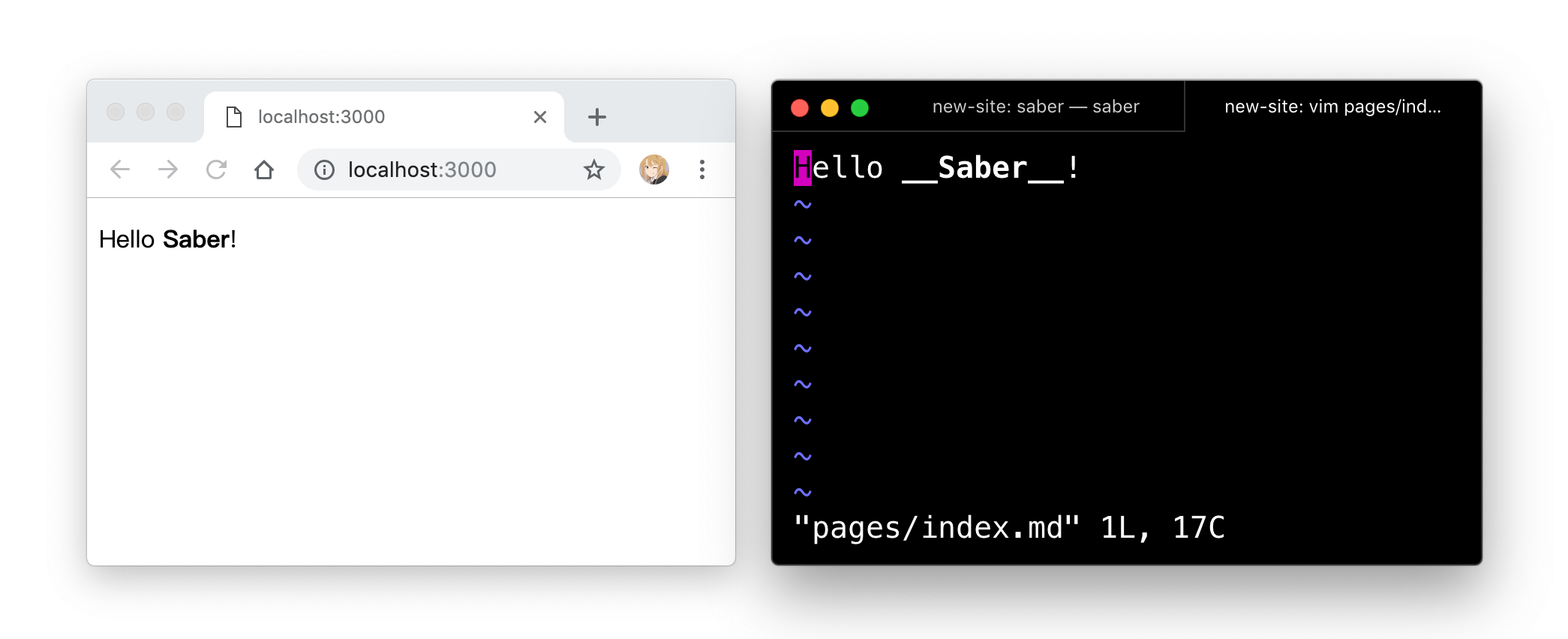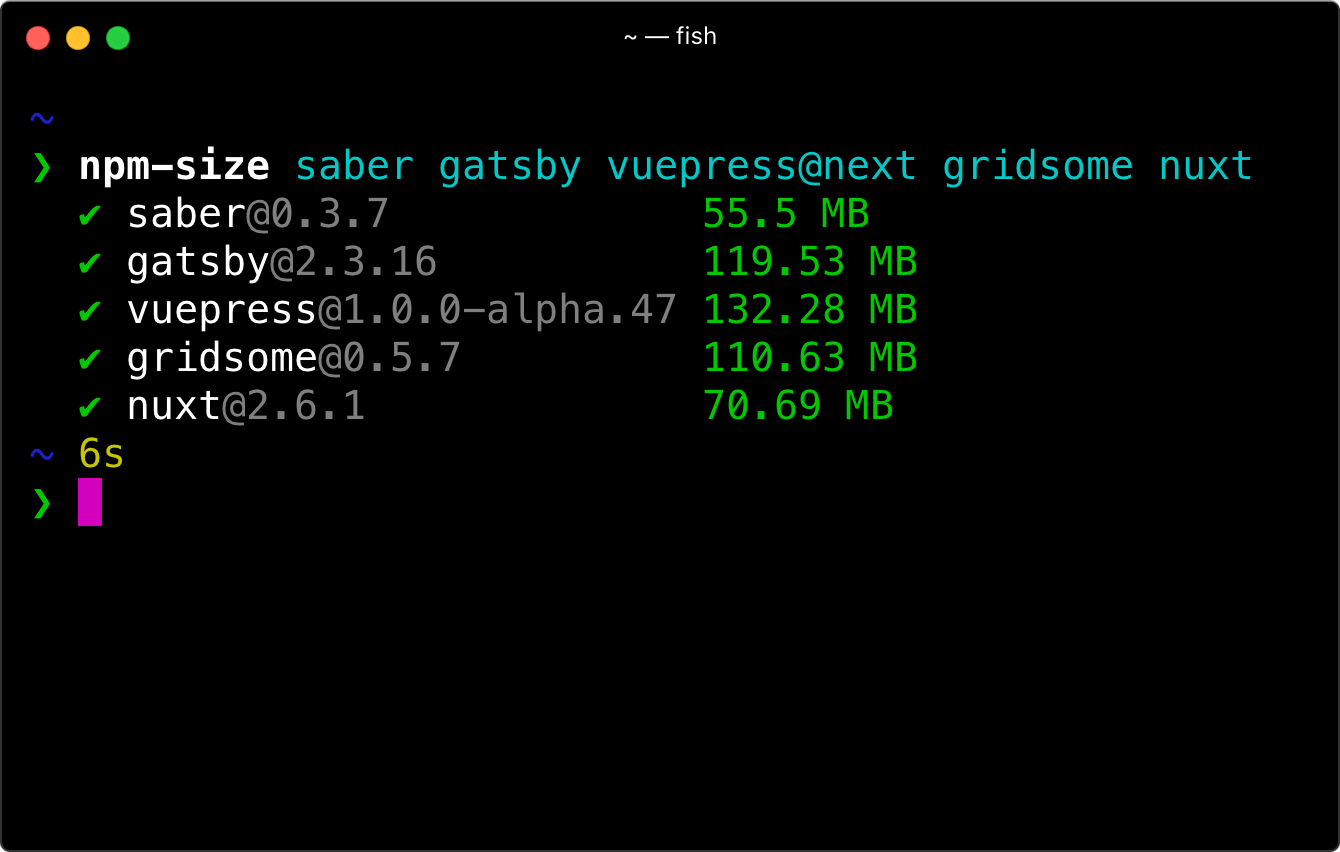It's been two months already since the first release of Saber, but this is the first time we actually introduce it officially (excluding the Tutorial).

Saber is a tool for building static websites with modern web techs like webpack, Babel and Vue. Getting started developing an application of any size is as easy as executing saber.
To start using it, run inside a new directory with a package.json:
$ npm install saber -DPopulate pages/index.md:
Hello __Saber__!Add a script to the package.json like this:
{
"scripts": {
"dev": "saber"
}
}and run:
$ npm run devBackground
The reason why I'm building Saber is simple: I love Hexo & Jekyll, but I also love using webpack & Vue, I enjoy the dev experience that you edit something and it automatically reflects in your browser, without refreshing.
Saber was previously known as Peco which is similar to VuePress but also has the blog feature baked in. Saber is a complete rewrite that makes it possible to use data from anywhere, and it's not GraphQL based. Saber is designed to be simple, for Hexo / N[eu]xt.js users, it's even easier to get started with.
A small framework
We want to keep the core of Saber as flexible/small as possible:

Our goal is to make Saber smaller than 50 MB.
Zero setup. Filesystem is the routing API.
Sometimes convention over configuration is a good practice, for example, Saber uses the filesystem as the routing API, you can populate pages/index.md which maps to the route / with:
Hello __world__!and then pages/about.vue which maps to /about.html with:
<template>
<h2>About us</h2>
</template>All that's needed to start working on the project is to run:
$ saberNo configuration unless it's needed. Automatic hot-code reloading, error reporting, source maps, transpilation for older browsers.
Blogging, Layouts & Theming
Just like Hexo, Saber uses pages/_posts folder for blog posts. If you populate a page at pages/_posts/hello-world.md, it will automatically map to /posts/hello-world.html.
Saber has all the plugins that're required for building a blog:
- If you want to display post list on your homepage, you can use saber-plugin-query-post which also automatically generates tag and category pages.
- If you want to generate RSS feed, use saber-plugin-feed.
- Find more at awesome-saber or build your own!
Check out the tutorial Intro the Saber to learn how to build a simple blog, use layouts, and share your layouts as a theme.
Performance matters
It's wrong if it's not fast, a static website should be fast by default, but JavaScript slows it down.
The JavaScript runtime of Saber is around 40 KB minified and gzipped.
Every page inside ./pages folder gets code splitting and their styles are inlined in the HTML.
Saber's <saber-link> (a drop-in replacement for Vue Router's <router-link>) will also prefetch the page component when user scrolls it into viewport.
For local development performance, Saber offers the Lazy Page Compilation mode which only compiles your pages when they are requested. This feature is experimental so we don't enable it by default, you can manually enable it via CLI flag --lazy.
In closing, this is my solution to building static websites with modern techs, if you like my work, please consider contributing to the project on GitHub, or supporting me on Patreon!